Fluance Ri71 review
Powered bookshelf speakers you can also use instead of a soundbar


For the money, the Fluance Ri71 offers quite a lot of some stuff – scale, dynamism and low-end presence in particular – along with a fair bit of visual drama. But then it also goes without other stuff – extended connectivity and anything approaching modernity where finish is concerned – which means it’s ultimately a product with selective appeal.
-
+
Confident, expansive sound
-
+
Good standard of build
-
+
Looks pricier than it is
-
-
Antiquated finishes
-
-
Slightly lumpy treble response
-
-
Needs more connectivity options
Why you can trust T3

Canadian specialist Fluance has plenty of previous where powered speakers are concerned – and with this new Ri71 model, it wants to bring your television into the arms of your audio system too.
There’s certainly a fair bit of stuff here for what looks, on the face of it, like a very enticing price. But as we all know, there’s quite a big difference between ‘looks’ and ‘sounds’. So how does this powered bookshelf pair stand up?
Price & Availability
The Fluance Ri71 is on sale now – and to be honest, the specifics of the pricing are variable.
As I write this review, the fluance.com website quotes a weirdly specific £326.15 – but there will be shipping to pay on top of this, and almost certainly import duty too.
You may feel less anxious if you order from Amazon, where the £399 asking price is an all-in figure.
In the United States the Ri71 sells for $399 – but this number is subject to adjustment, depending on how annoyed the US is with Canada (and vice versa) on any given day.
In Australia, meanwhile, it seems Amazon is again the sensible route to explore – AU$889 is the going rate.
Get all the latest news, reviews, deals and buying guides on gorgeous tech, home and active products from the T3 experts
Features & What's New?
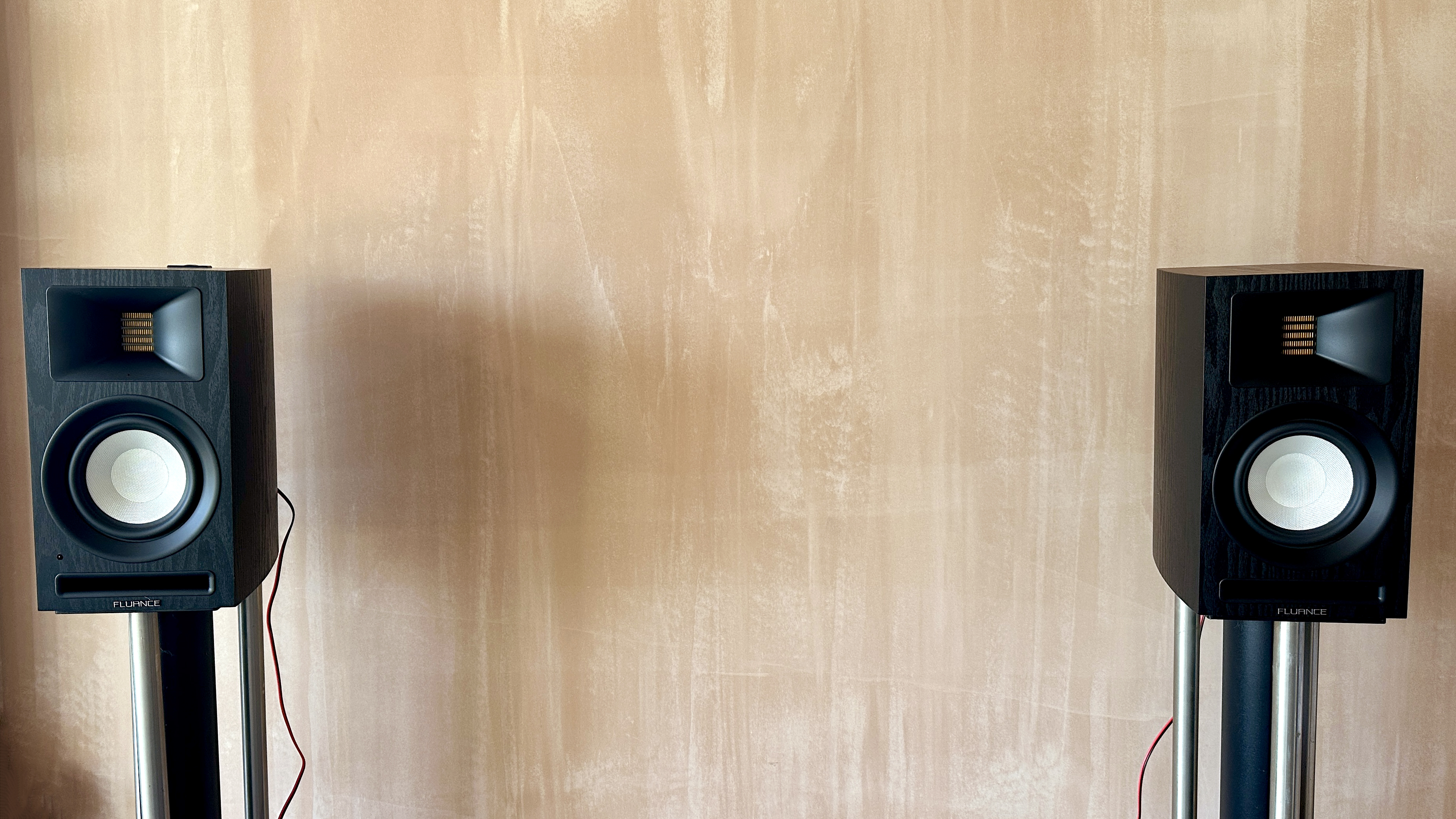
As is the way with almost every pair of powered speakers (no matter how affordable or expensive they are), one speaker in the pair is in charge and the other does as it’s told. That’s the case with the Ri71.
The primary speaker is where all amplification, and wireless and physical connectivity, is housed. The Fluance features a total of 120 watts of Class D power, and naturally it’s divided equally between each speaker.
Wireless connectivity is via Bluetooth 5.0, and the Ri71 is compatible with SBC, AAC, aptX HD and aptX Low Latency codecs.
The physical stuff, meanwhile, consists of a line-level analogue input on a pair of RCA connections, and an HDMI ARC socket – Fluance has high hopes for the Ri71 as an alternative to the best soundbars.
Incoming digital signals are dealt with by a 24bit/192kHz DAC.
There’s also a pre-out for a subwoofer – connect one and the Ri71 rather pragmatically chucks everything of 80Hz and below its way.
The primary speaker connects to its secondary partner using 1.8m of bog-standard speaker cable that’s supplied in the packaging. Each speaker does, at least, have authentic speaker cable binding posts that will accept bare wire or banana plugs – so a cable upgrade should be simple enough to perform.
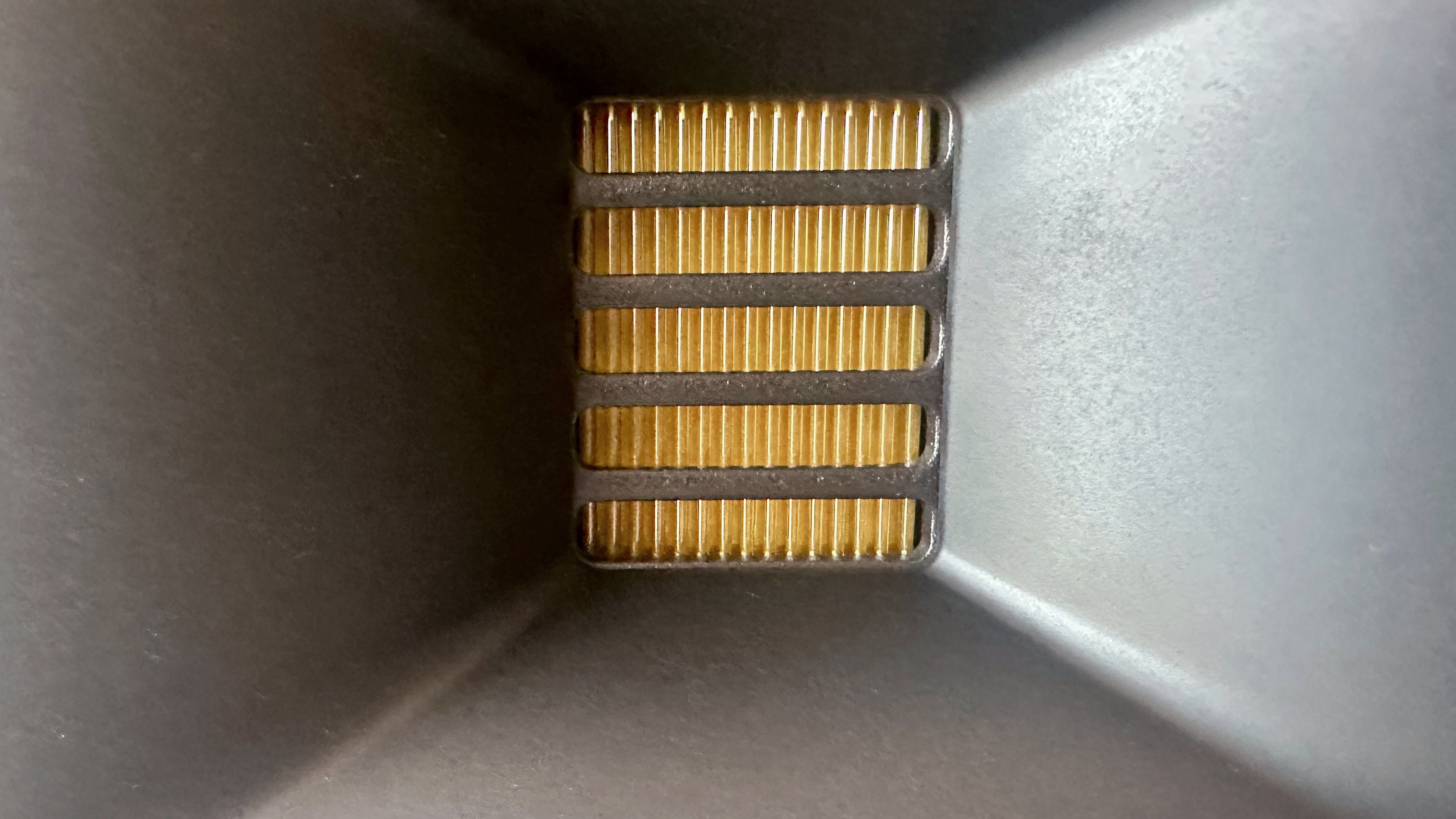
From the front, the differences between the two speakers are few, and quite difficult to spot. The primary speaker has a small RF receiver for use with the remote control, and an absolutely miniscule LED to let you know the system is powered up and to confirm the input that’s been selected.
Otherwise, they’re identical. This means each has a 28 x 35mm AMT (‘air motion transformer’) high-frequency unit in a mildly horn-loaded arrangement above a 133mm woven glassfibre mid/bass driver with a forward-facing reflex slot at the very bottom of the cabinet face.
The AMT, in particular, is an unexpected feature – this sort of technology, with the promise of its expansive radiating area as well as its relative complexity and expense, is far from common at this sort of price point. Fluance is not blind to the kudos of this gently glamorous technology - which is why, I presume, the Ri71 speakers are not supplied with grilles.
This arrangement is, according to the manufacturer, good for a frequency response of 46Hz-30kHz – numbers which, if they’re anything approaching accurate, represent quite an achievement.
Performance

Connect the Fluance Ri71 to a TV using its HDMI ARC cable and the system makes a fairly strong case for itself as a soundbar substitute. Its strengths are very much suited to this sort of application.
For instance, it has very decent outright scale and is pretty adept at creating a soundstage. It can centre the midrange well, so that dialogue is delivered in direct and quite articulate fashion. Its ability with detail retrieval goes a long way towards creating a sensation of completeness, and it has sufficient dynamic headroom to stay in control of big shifts in volume or intensity. No matter if you’re watching some broadcast TV or a Hollywood blockbuster, these are all very welcome traits.
And they translate over to music playback too, no matter if you’re listening via that HDMI ARC socket, the line-level analogue alternative or streaming wirelessly via Bluetooth. Detail levels are high, the outright size of the stage is impressive, and the amount of space the Ri71 can allow each element of a recording to enjoy without letting it sound remote from the rest of the action is impressive too.
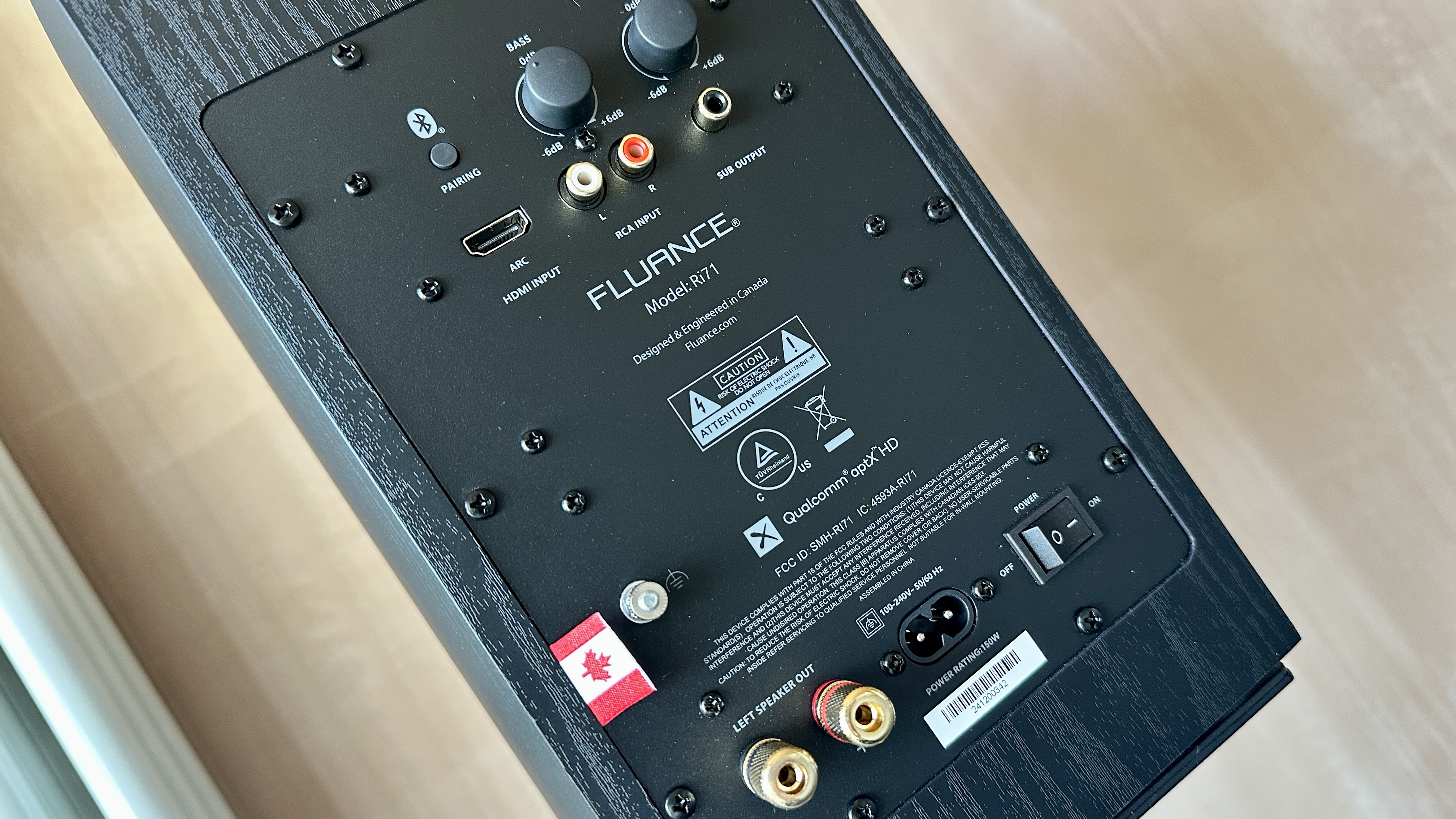
Frequency response is fairly even, which makes for a nicely naturalistic presentation in this respect. There’s appreciable low-frequency presence and punch available – but the Fluance is able to leaven it with plenty of detail regarding tone and texture, so while it can hit pretty hard it never sounds short of control. Rhythmic expression is good as a consequence, and momentum levels never dip.
Midrange reproduction, too, enjoys plenty of well-contextualised detail, and has the sort of positive eloquence that can make a singer sound characterful as well as technical. There’s an openness to the midrange reproduction that lets voices project ahead of what’s going on around them – but without them sounding less than an integral part of the overall performance.
The transition from midrange to top-end is handled reasonably smoothly, but once high-frequency information starts to be relayed it becomes apparent these two drivers don’t have an awful lot in common where tonality is concerned.
There’s a slight grittiness to the treble reproduction here – for all its openness, the Ri71 can’t prevent some latent edge creeping into the higher frequencies. And it’s a trait that only becomes more apparent the more volume you dial in – and be in no doubt, the Fluance can quite easily become very loud indeed.
Design & Usability
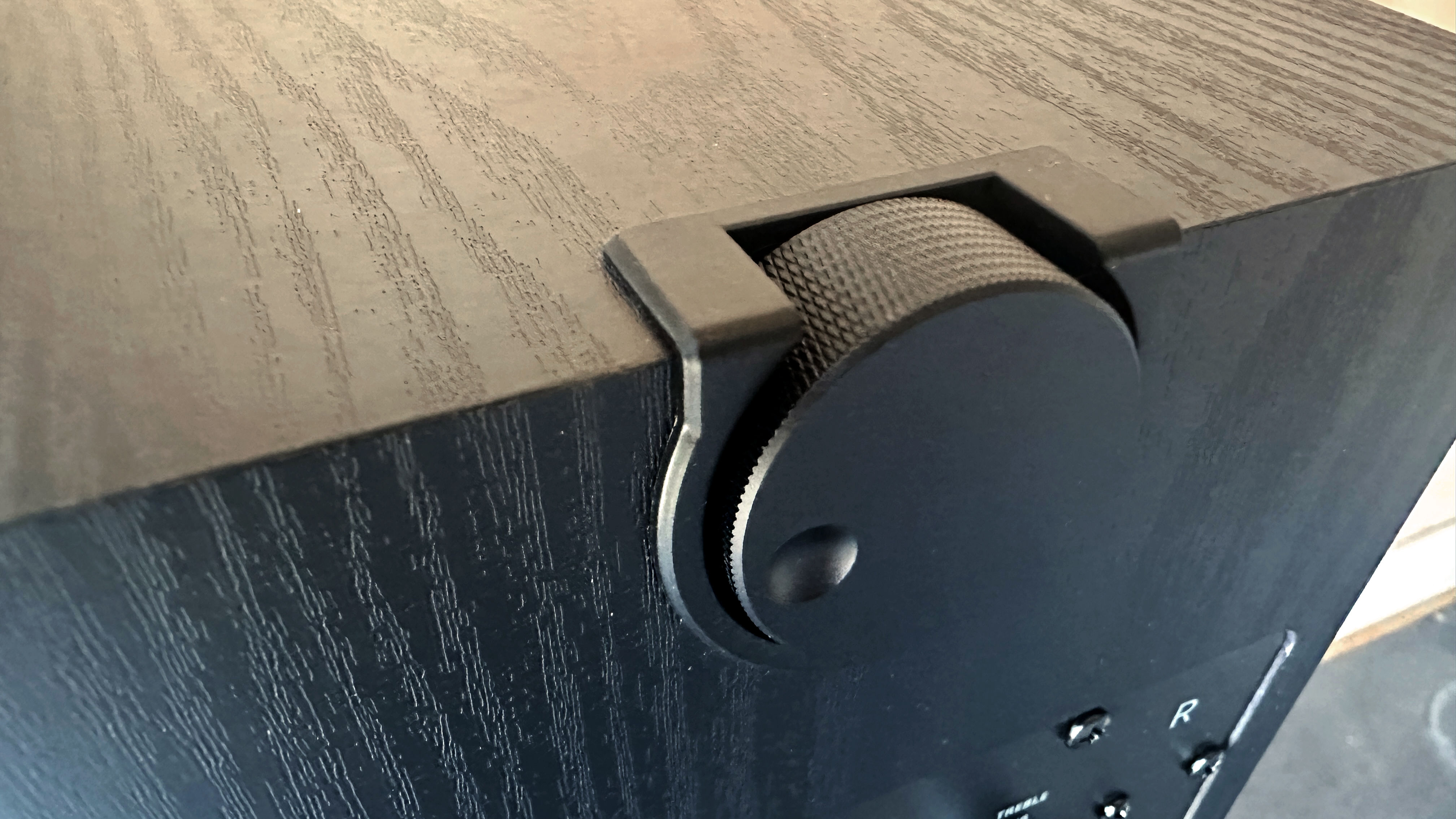
Each Ri71 speaker is 310 x 185 x 199mm (HxWxD), although the primary speaker is probably a fraction taller thanks to the rotary volume control that just breaks above the top surface of the speaker.
This master speaker weighs in at 6.4kg, while its secondary partner is 5kg – so wall- or shelf-mounting really shouldn’t be an issue. Fluance supplies little rubber feet on the bottom of each speaker in case shelf-mounting is the way you want to go.
There’s nothing remotely glamorous about the Ri71 cabinets though. They’re square-edged and pointy – and while no one’s expecting a real-wood veneer at this sort of money, the ash-effect black vinyl wrap of my review sample is a throwback to the 80s (and not in a good way).
The alternatives – ‘walnut’ or white – look similarly old-fashioned in a sector of the market where matte lacquer finishes in numerous colours are much more the thing these days. There’s no arguing with the standard of construction that’s demonstrated here, mind you.
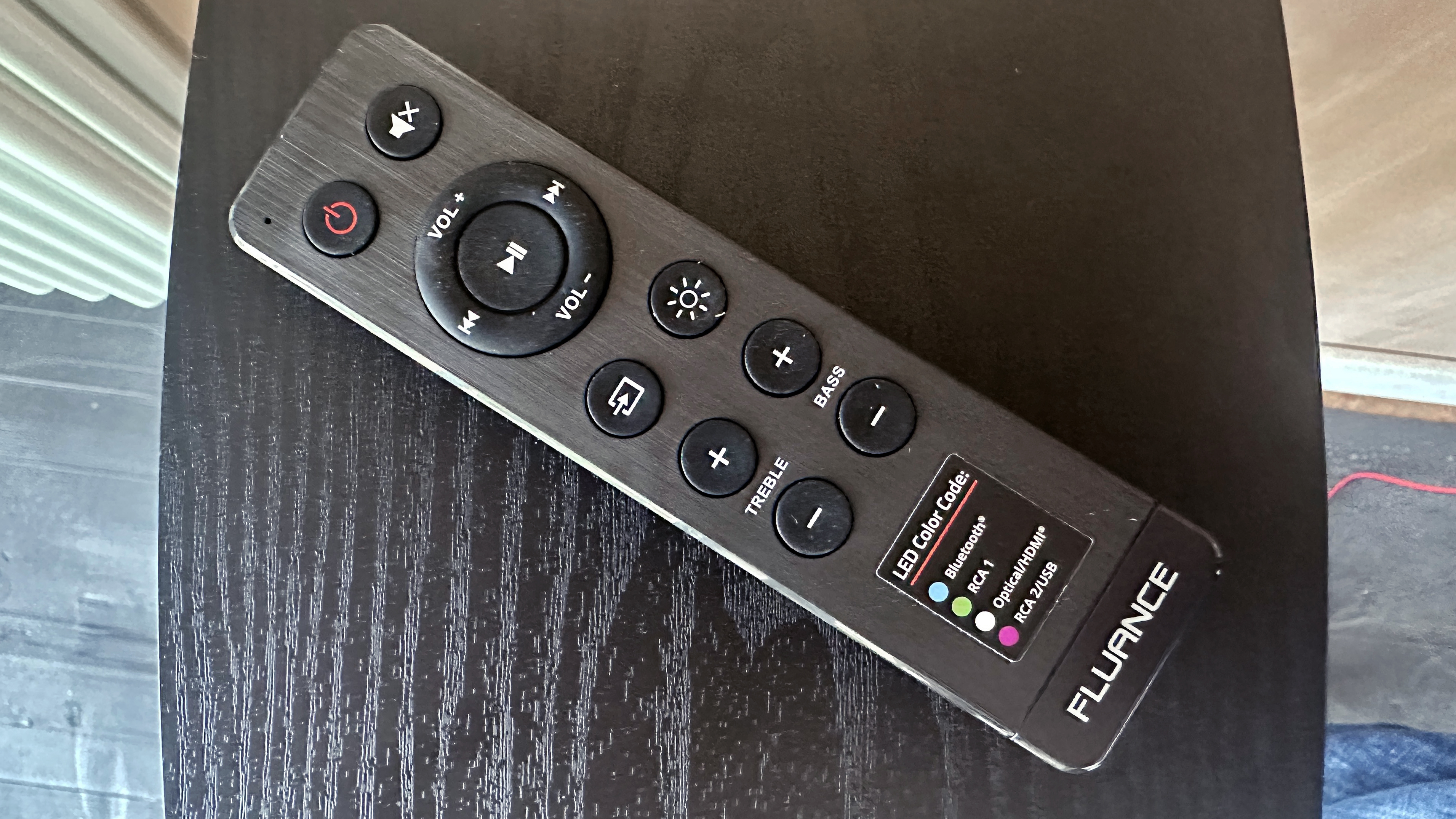
Using the Ri71 is not a complicated process. The primary speaker requires a connection to mains power, of course, and then it needs to be connected to its secondary partner using that length of speaker cable. Wired and wireless connections need to be made, and then it’s simply a question of selecting your input, dialing in your volume, fiddling with the ‘bass’ and ‘treble’ controls on the primary speaker’s rear panel.
You can select your input and set your volume level using the unremarkable little remote control handset Fluance supplies. There’s bass and treble adjustment here too, plus a little sticker that’s intended to help you remember what the coloured LED on the primary speaker signifies. And there’s a rotary volume control at the top of the rear panel that just peeks above the top surface of the speaker.
Fluance Ri71 review: Verdict

For the money, the Fluance Ri71 offers quite a lot of some stuff – scale, dynamism and low-end presence in particular – along with a fair bit of visual drama.
But it also goes without other stuff – extended connectivity and anything approaching modernity where finish is concerned – which means it’s a product with selective appeal.
Ultimately I find the Fluance Ri71 will be a niche proposition. But for the right buyer it's a great option. After all, if you want a stereo system that’s just as happy to act as a soundbar as it is to act as a music device, you could spend your cash a lot less effectively.
Also consider
The Ruark MR1 mk3 costs the same as the Fluance Ri71 – and while it’s not as ready to fill a medium-sized room with sound, it is nevertheless a better bet for the rest of us. Its little cabinets look and feel quite special, its USB-C and digital optical inputs make it a genuinely high-resolution system – and it sounds better-balanced than the Fluance.
Simon Lucas is a freelance technology journalist and consultant, with particular emphasis on the audio/video aspects of home entertainment. Before embracing the carefree life of the freelancer, he was editor of What Hi-Fi? magazine and website – since then, he's written for titles such as Wired, Metro, the Guardian and Stuff, among many others. Should he find himself with a spare moment, Simon likes nothing more than publishing and then quickly deleting tweets about the state of the nation (in general), the state of Aston Villa (in particular) and the state of his partner's cat.
You must confirm your public display name before commenting
Please logout and then login again, you will then be prompted to enter your display name.
